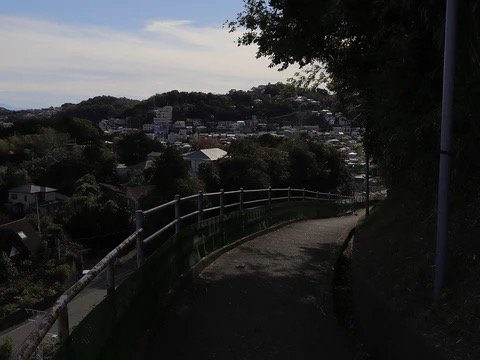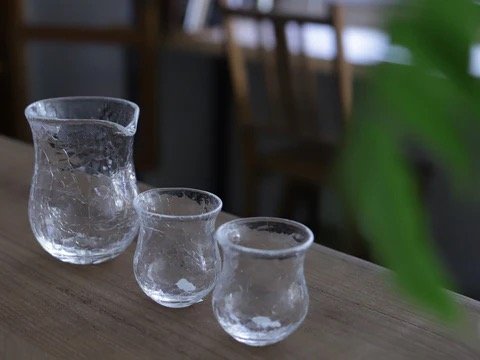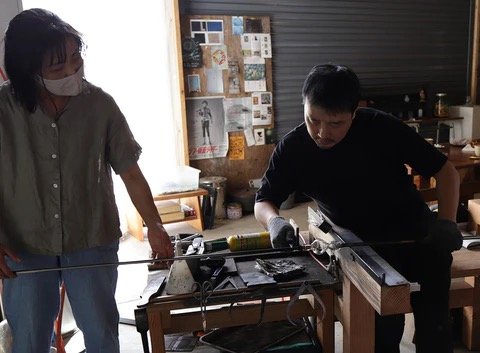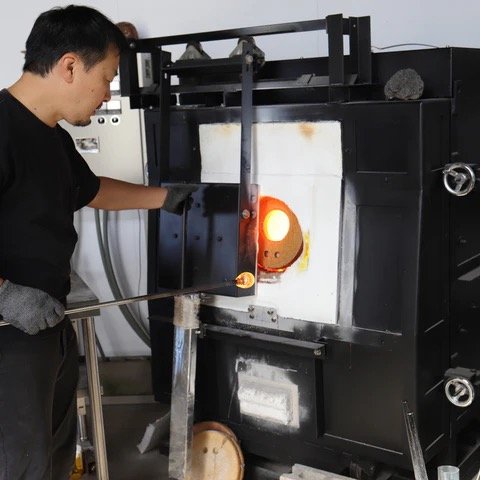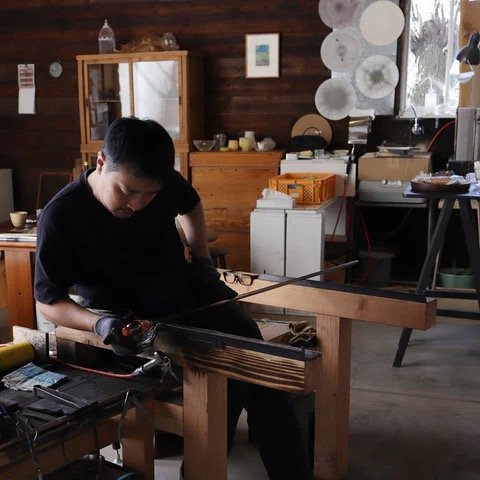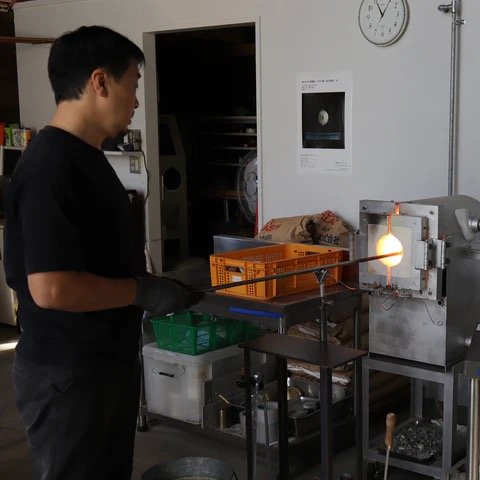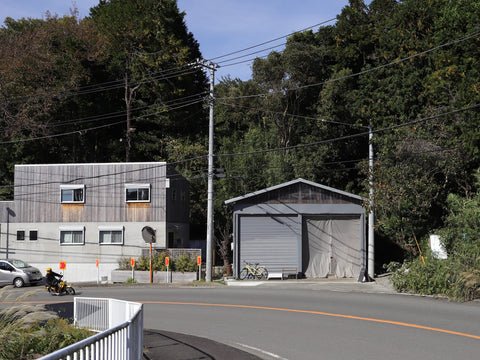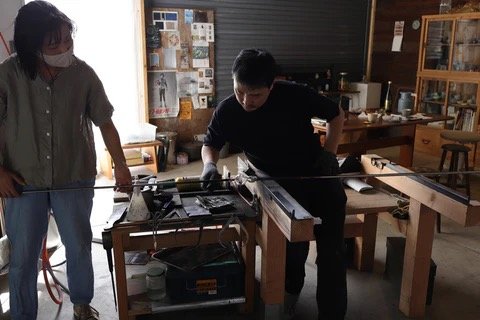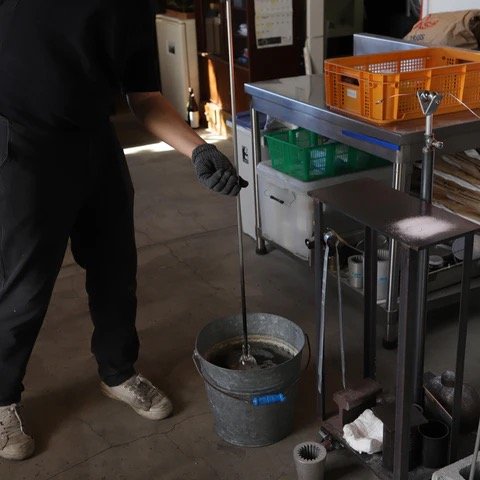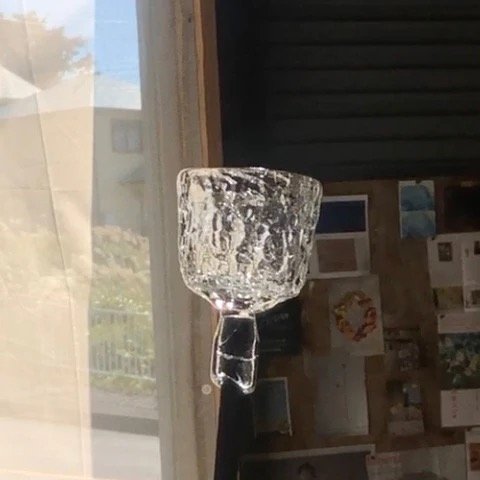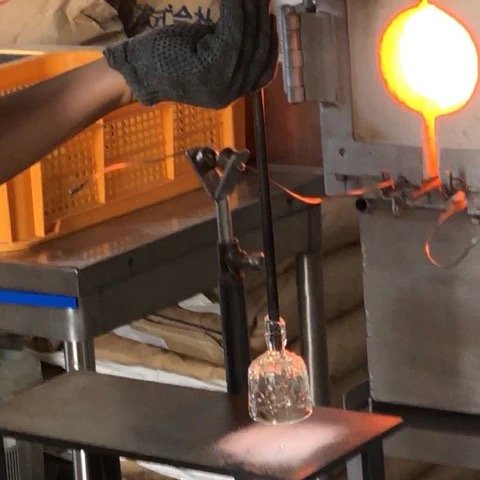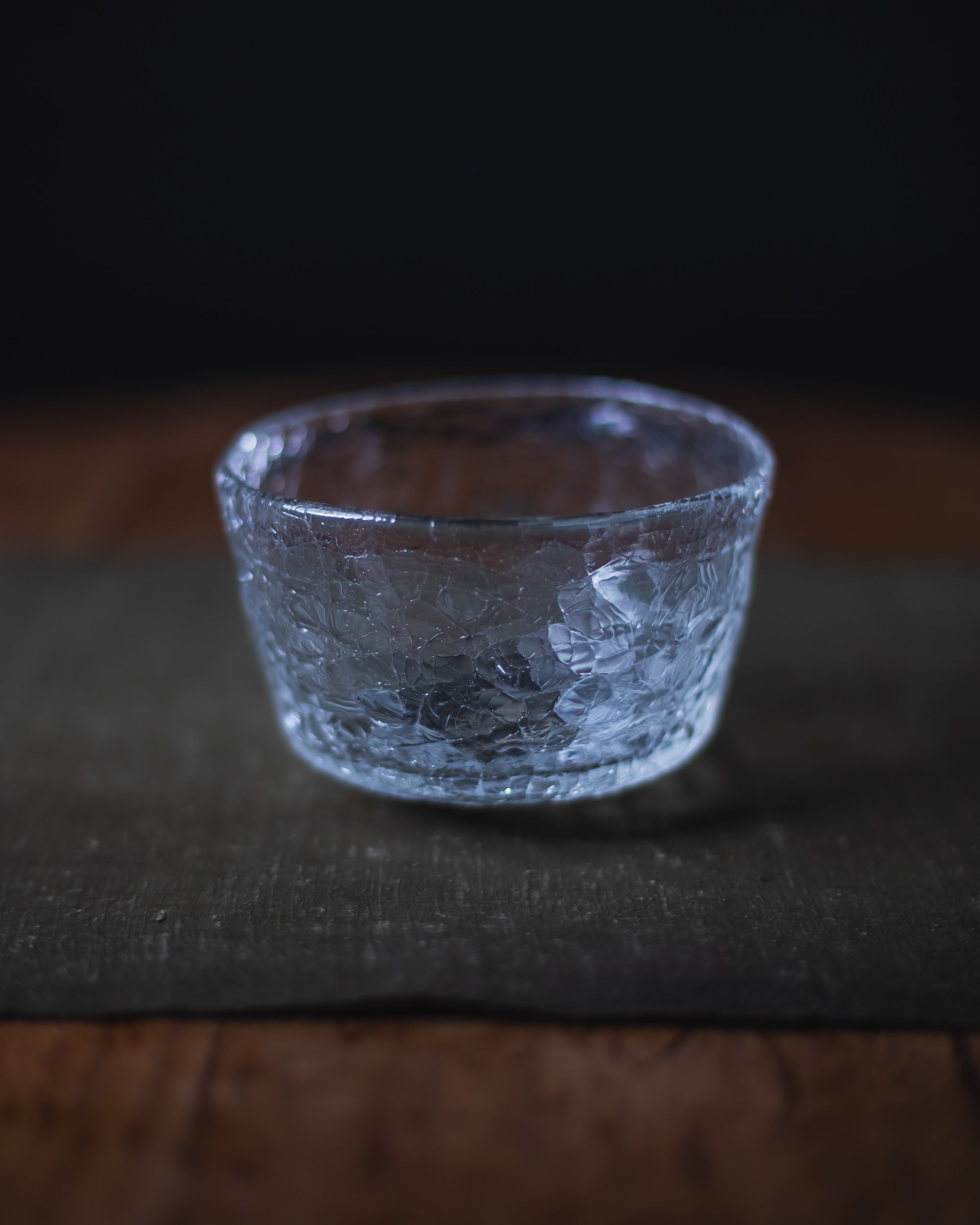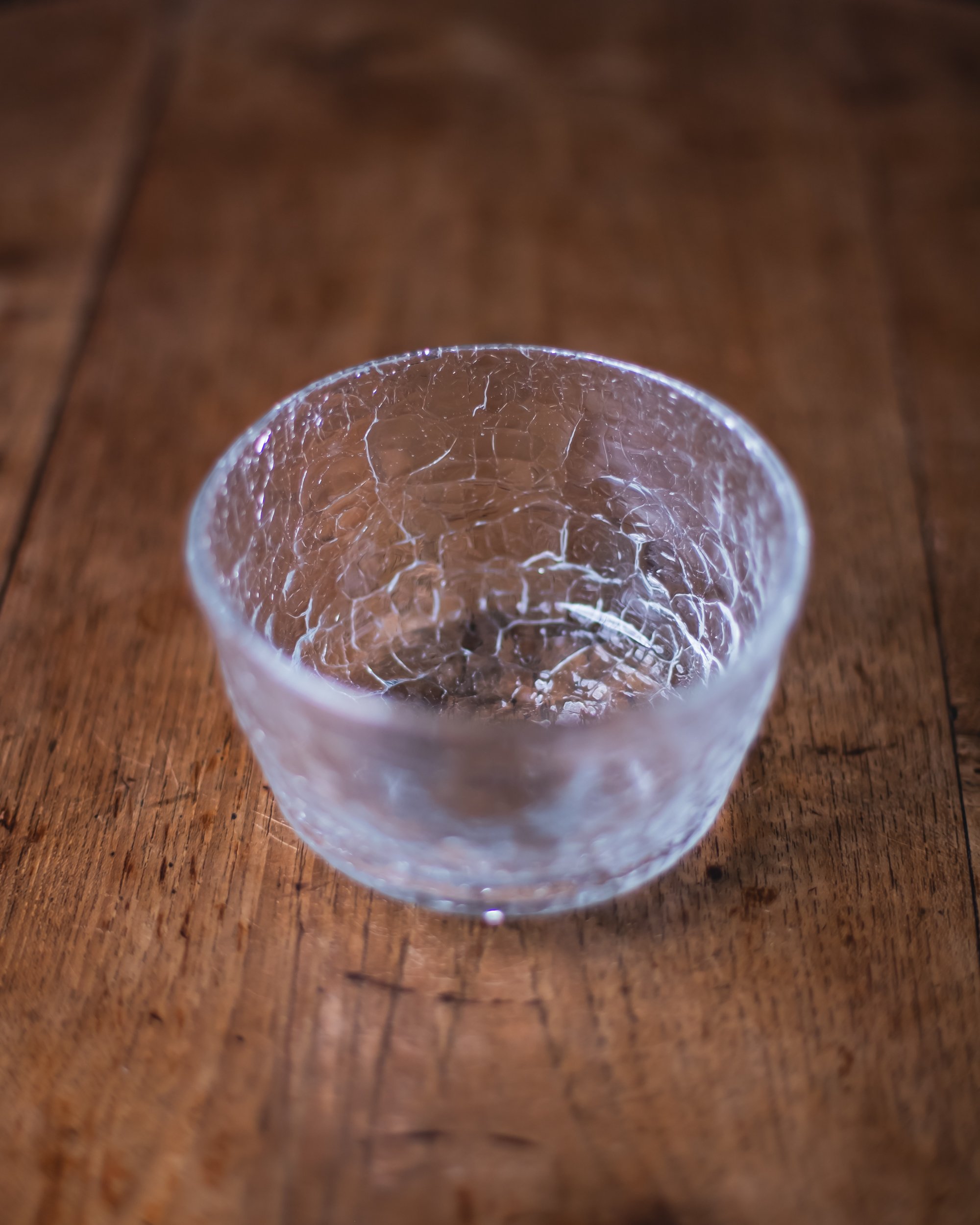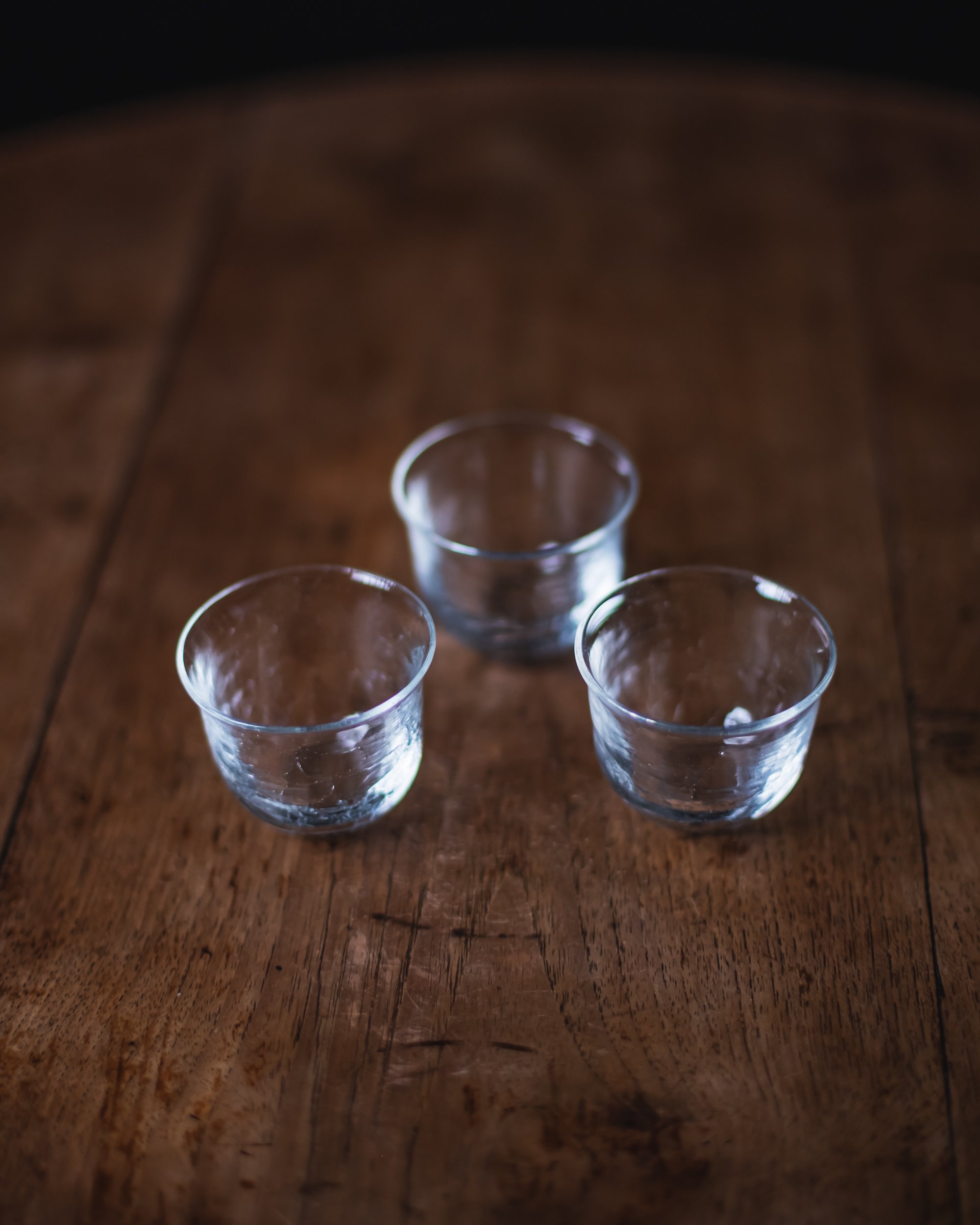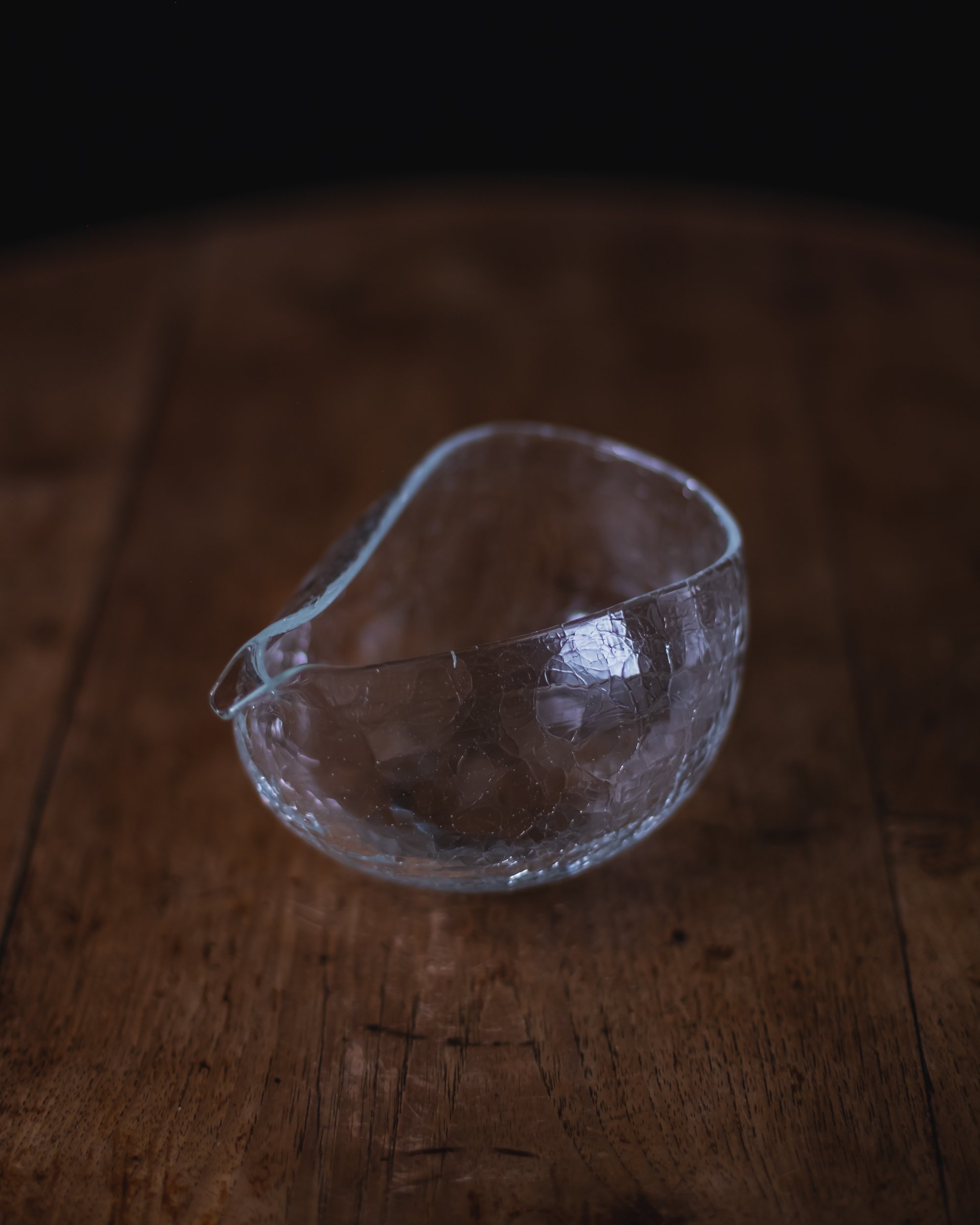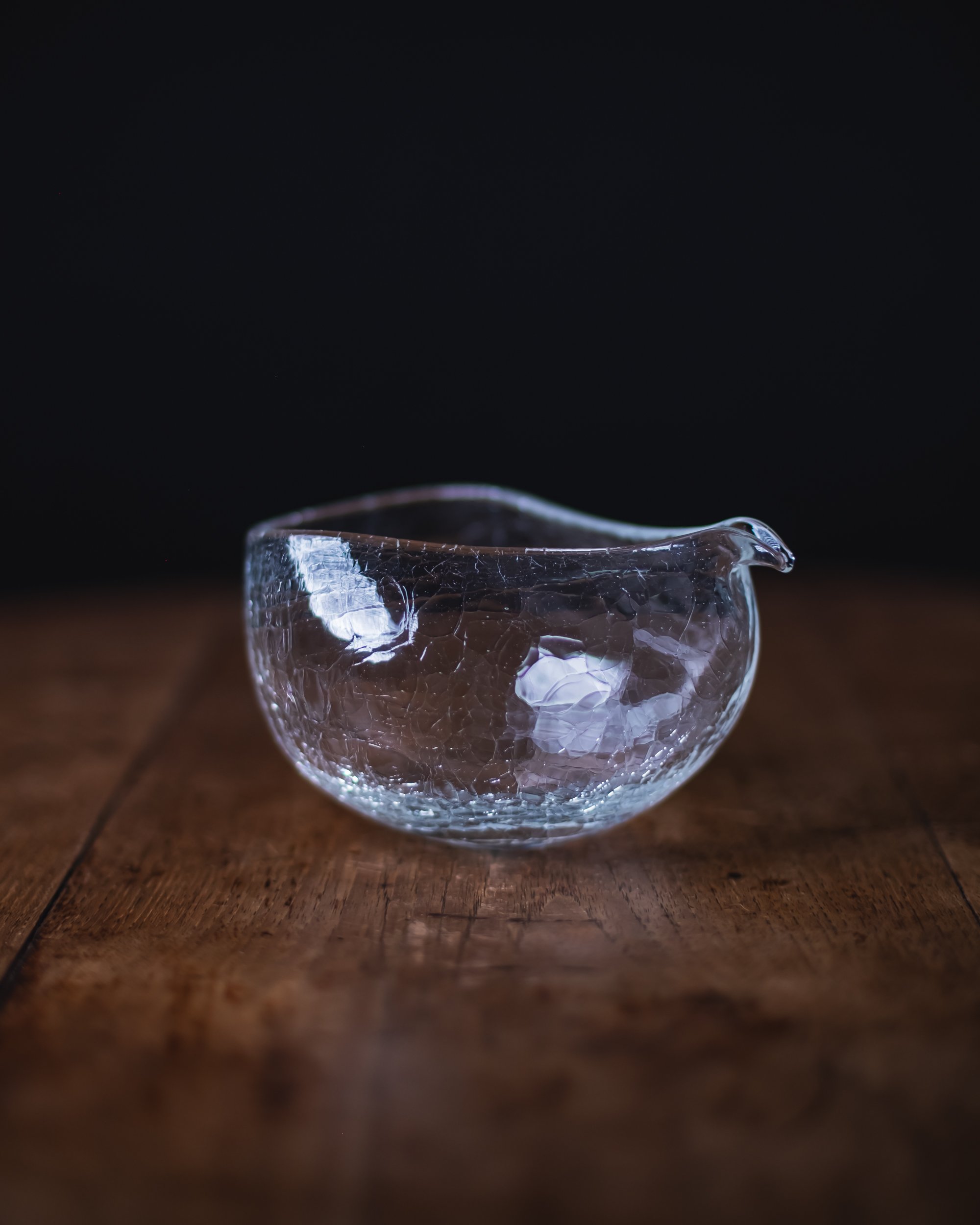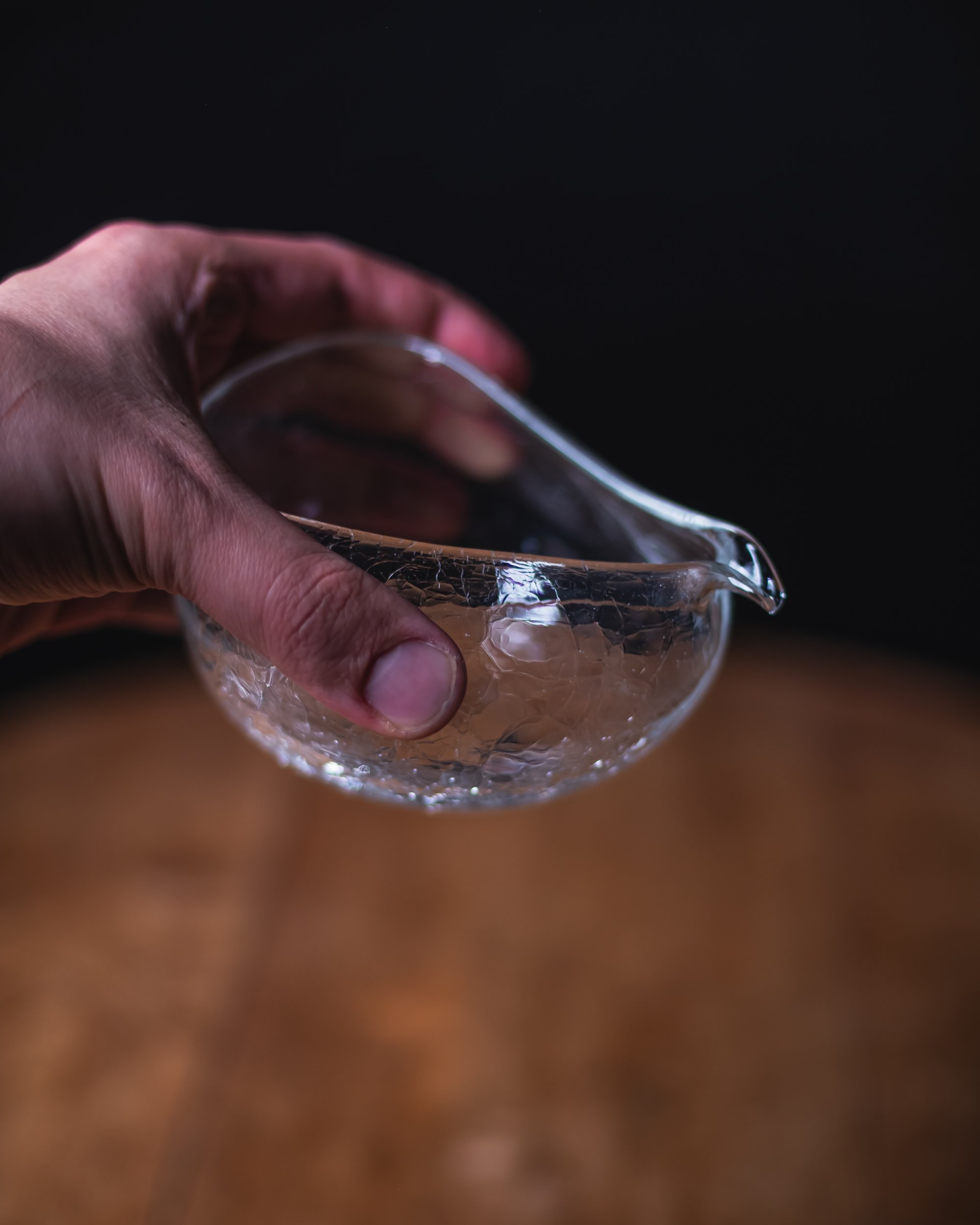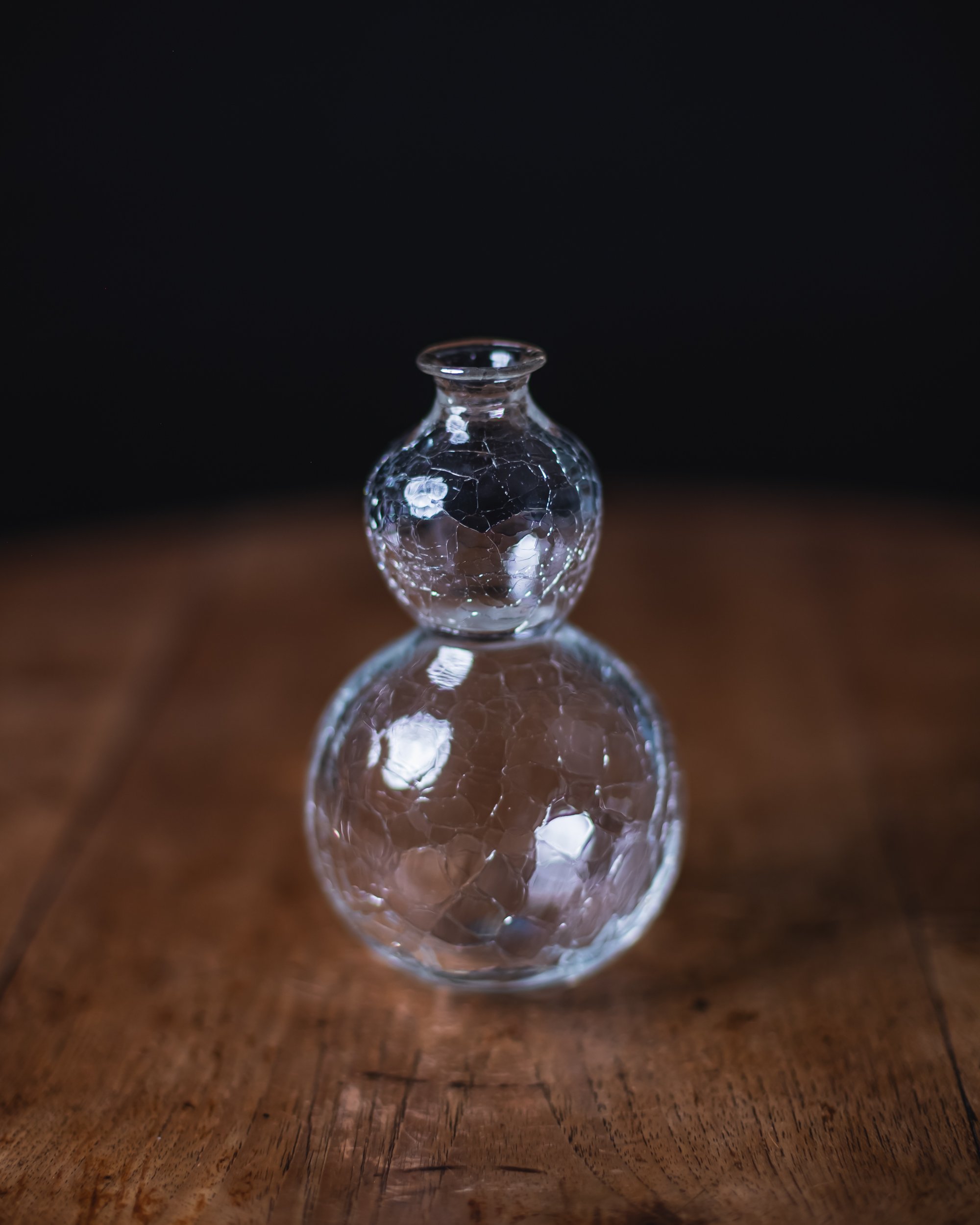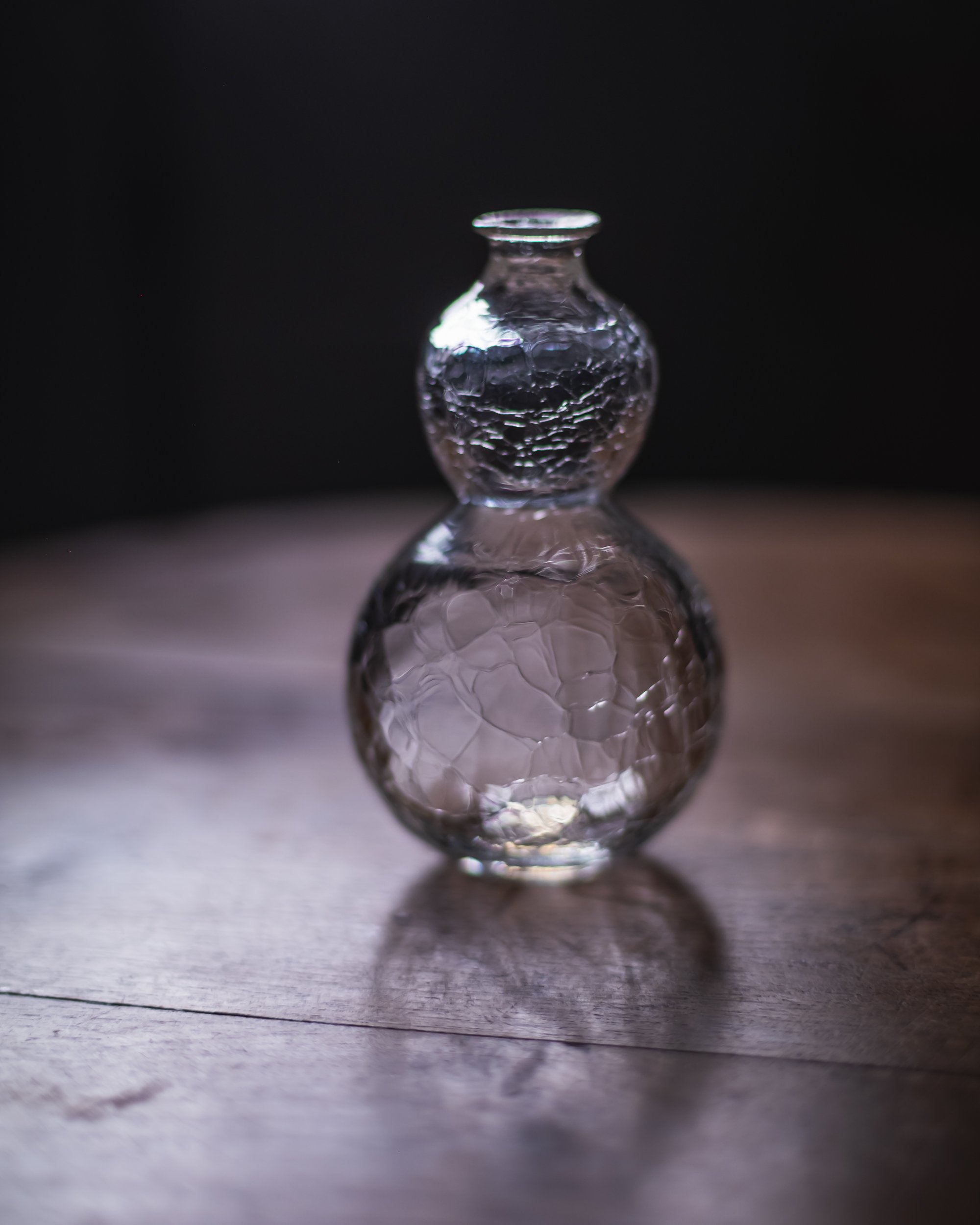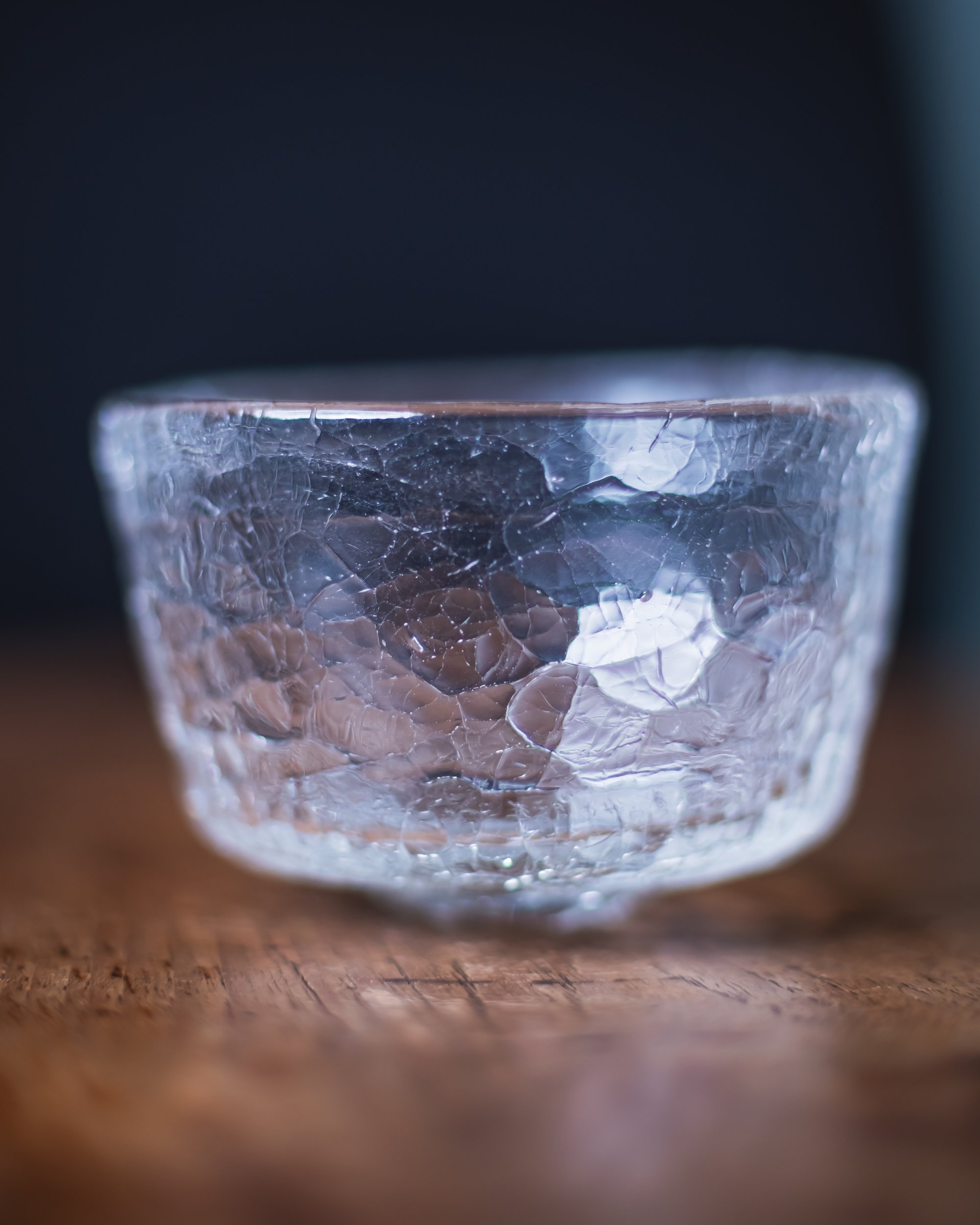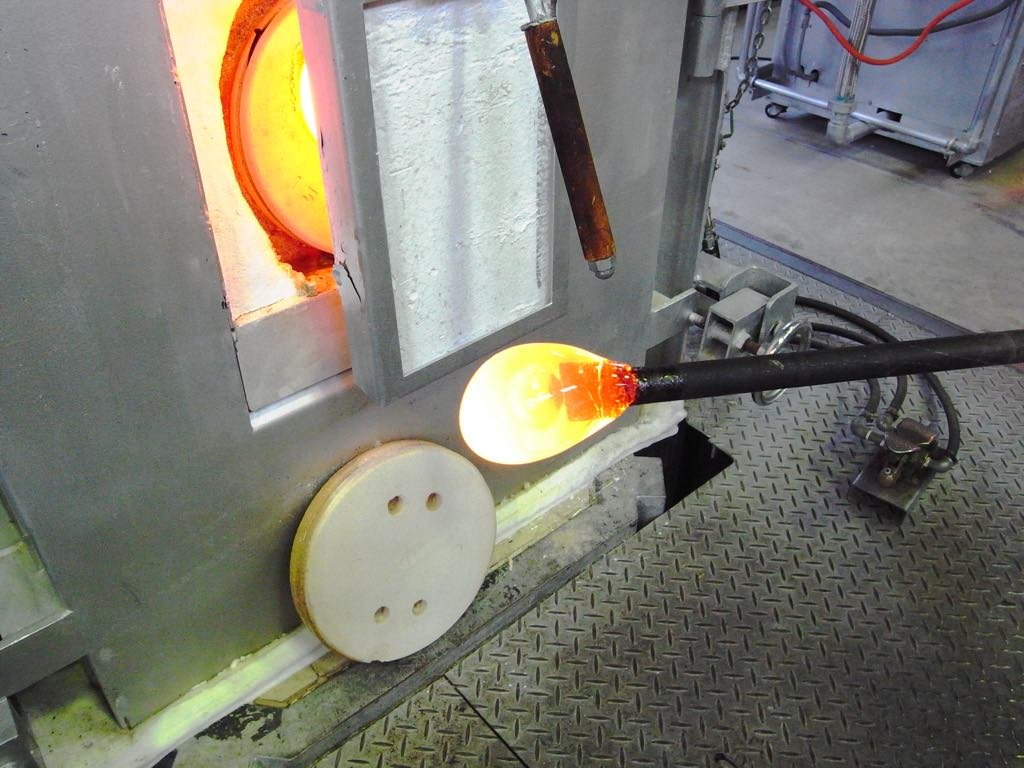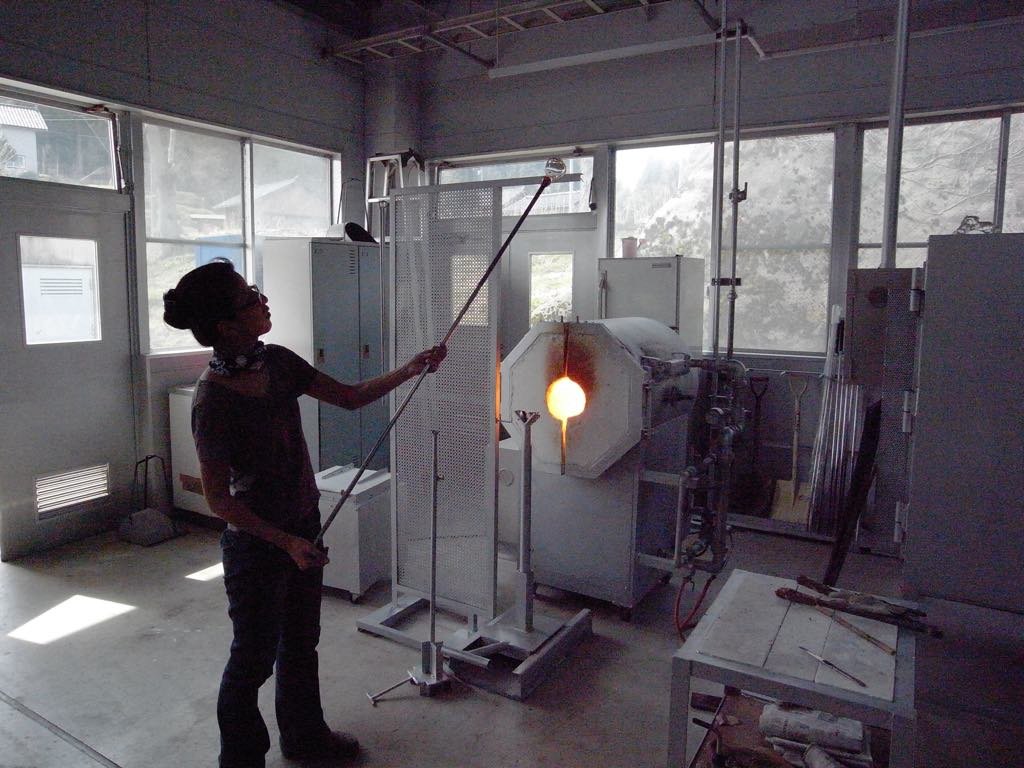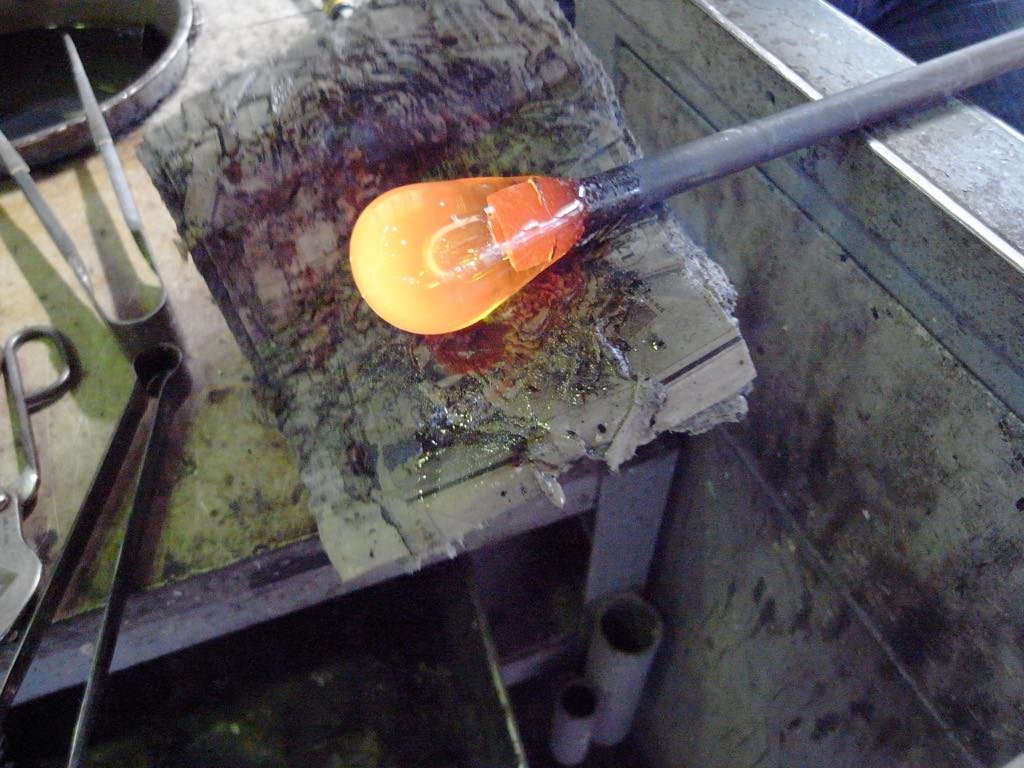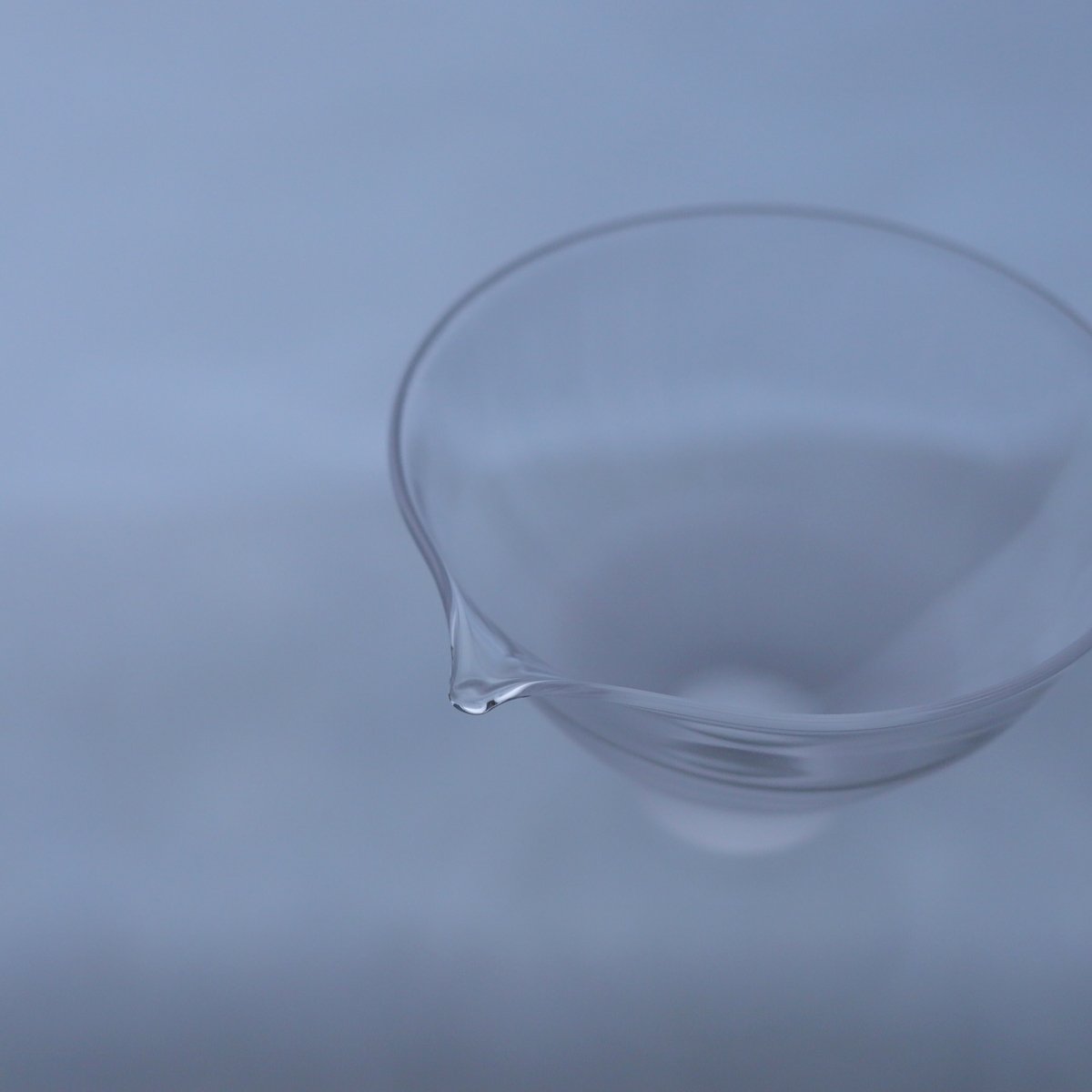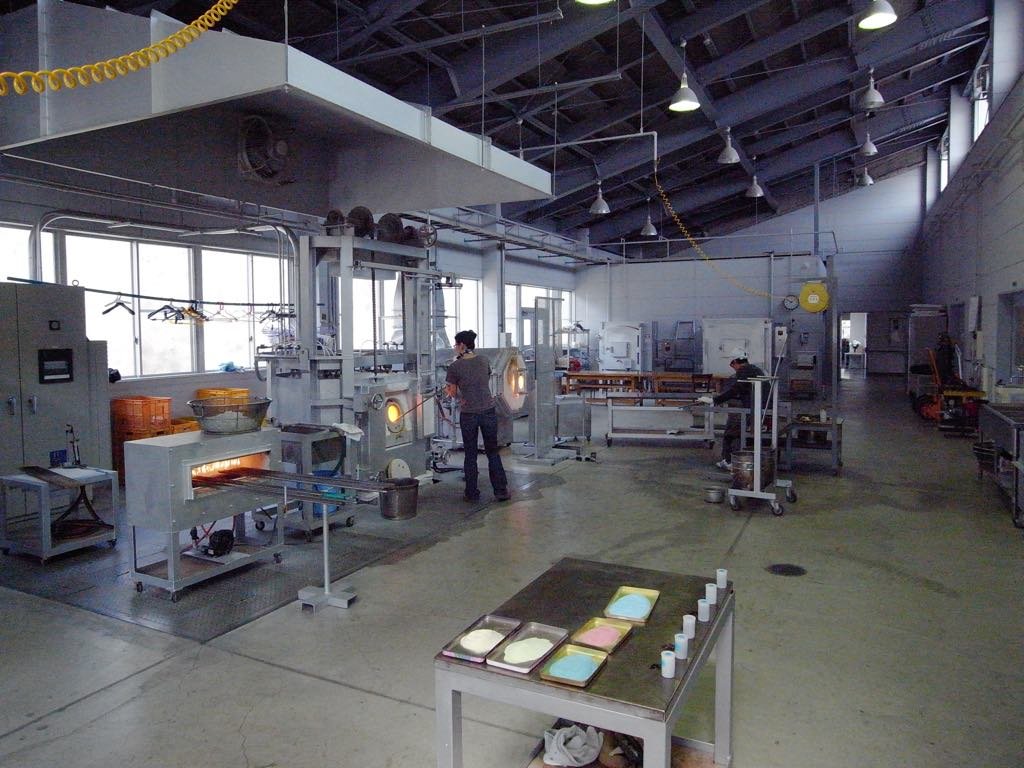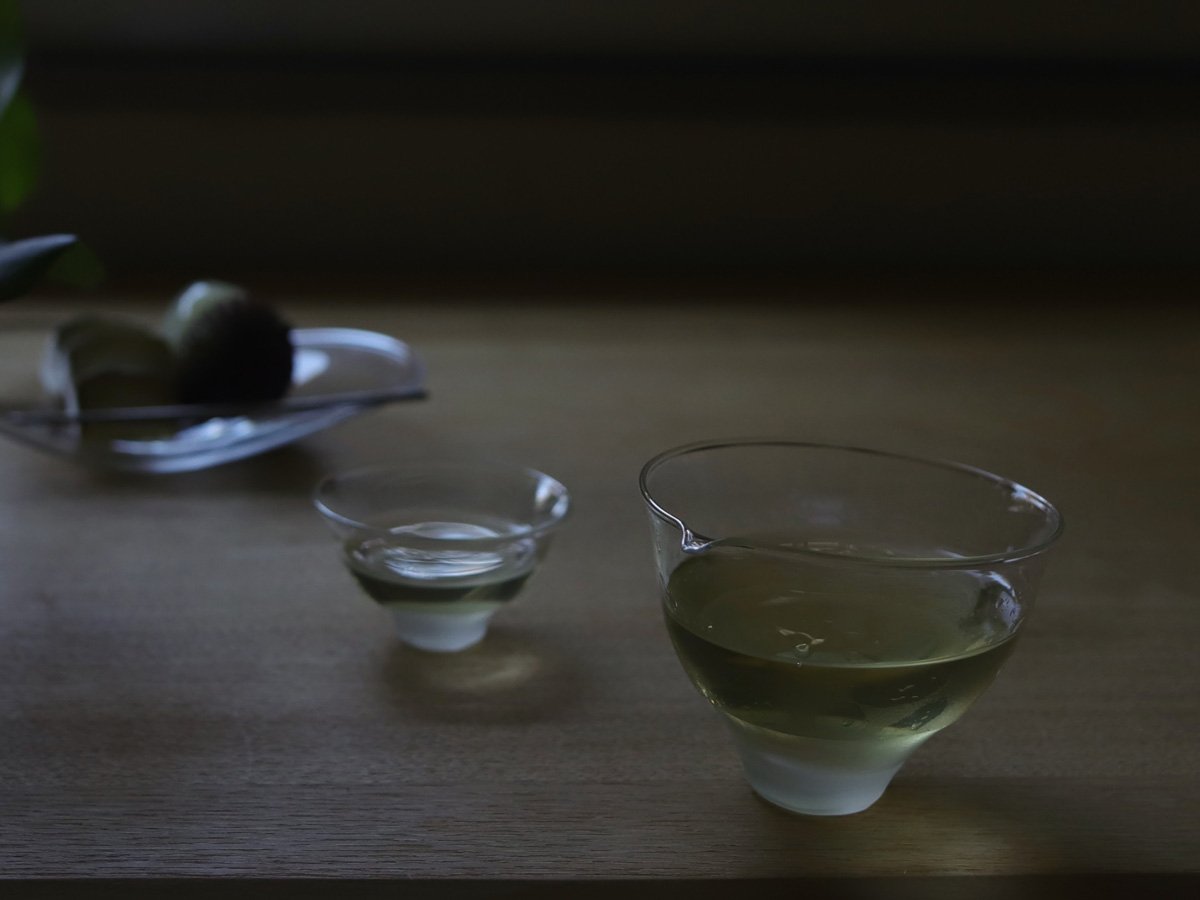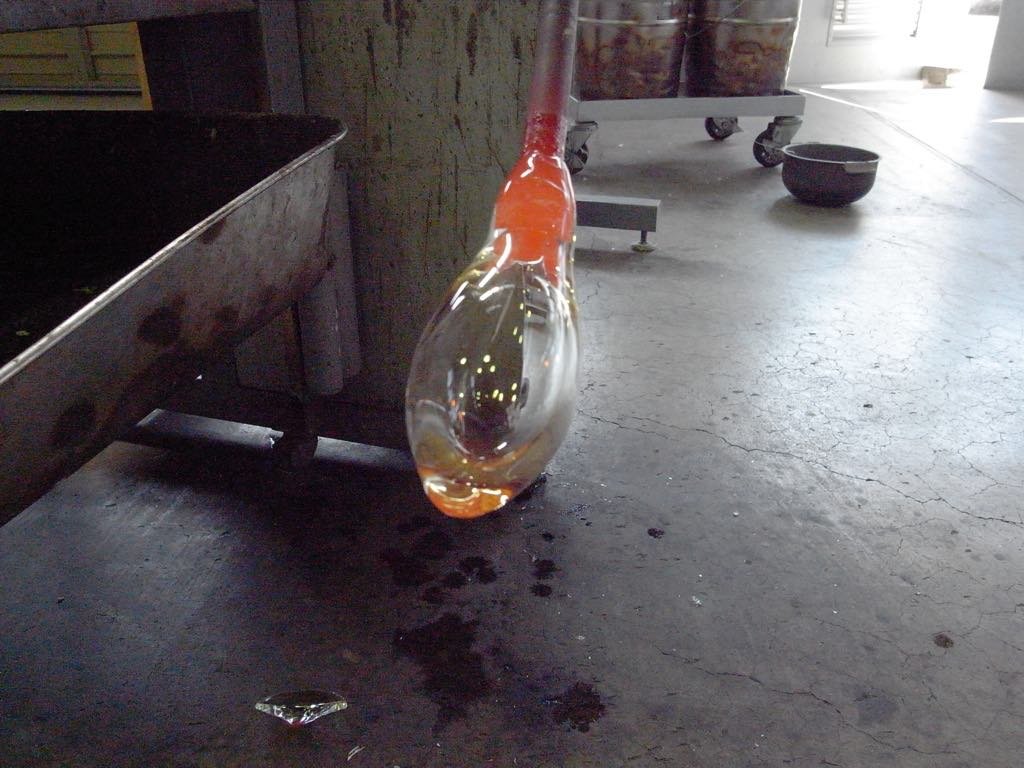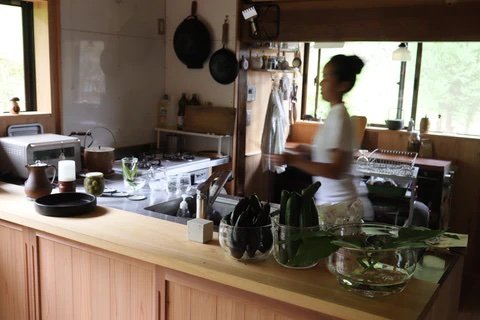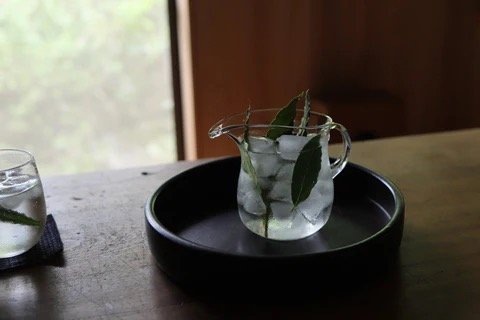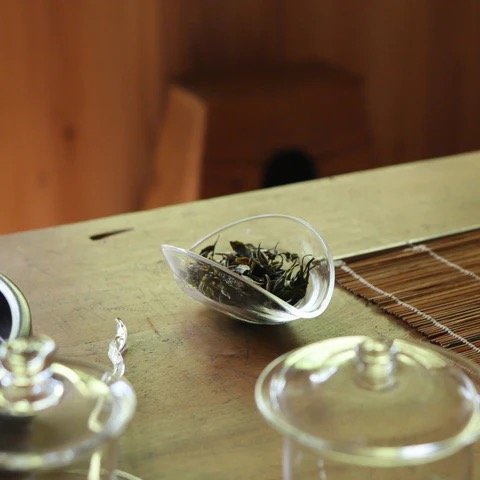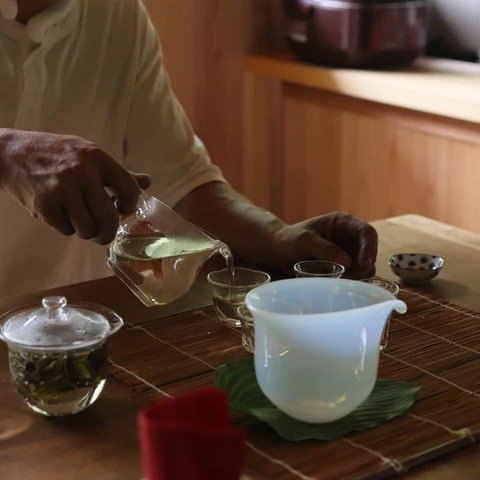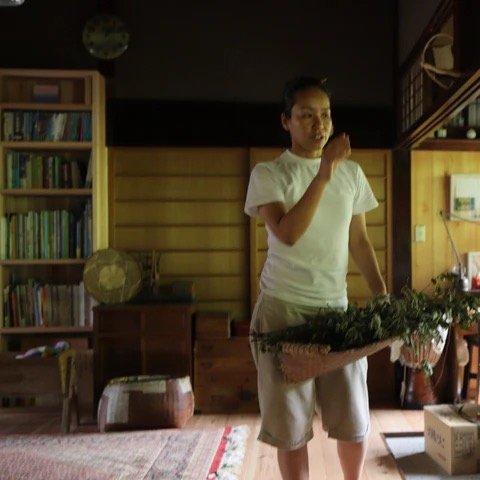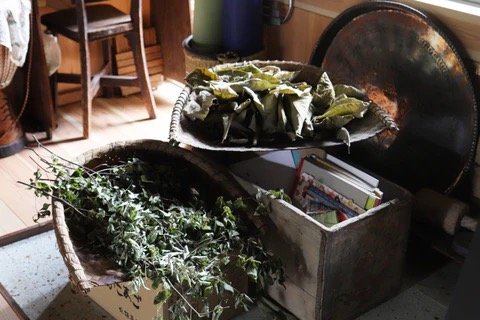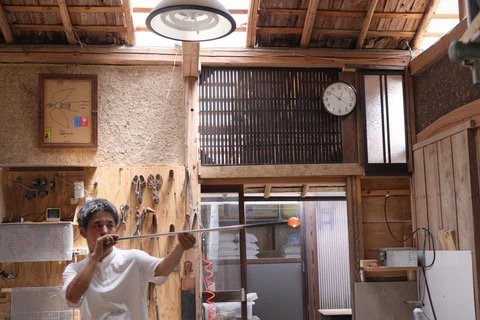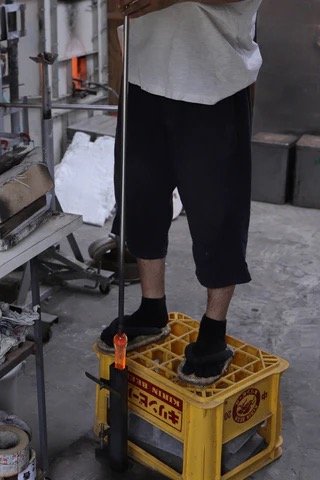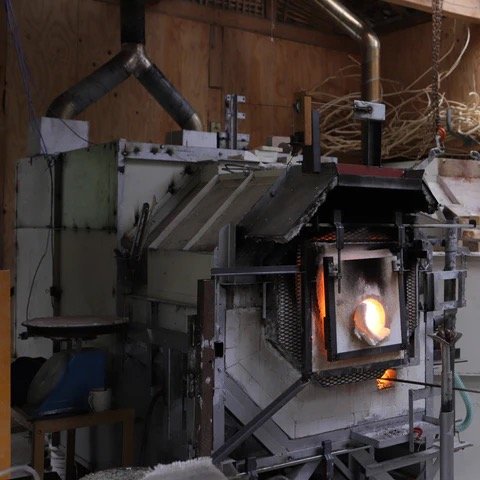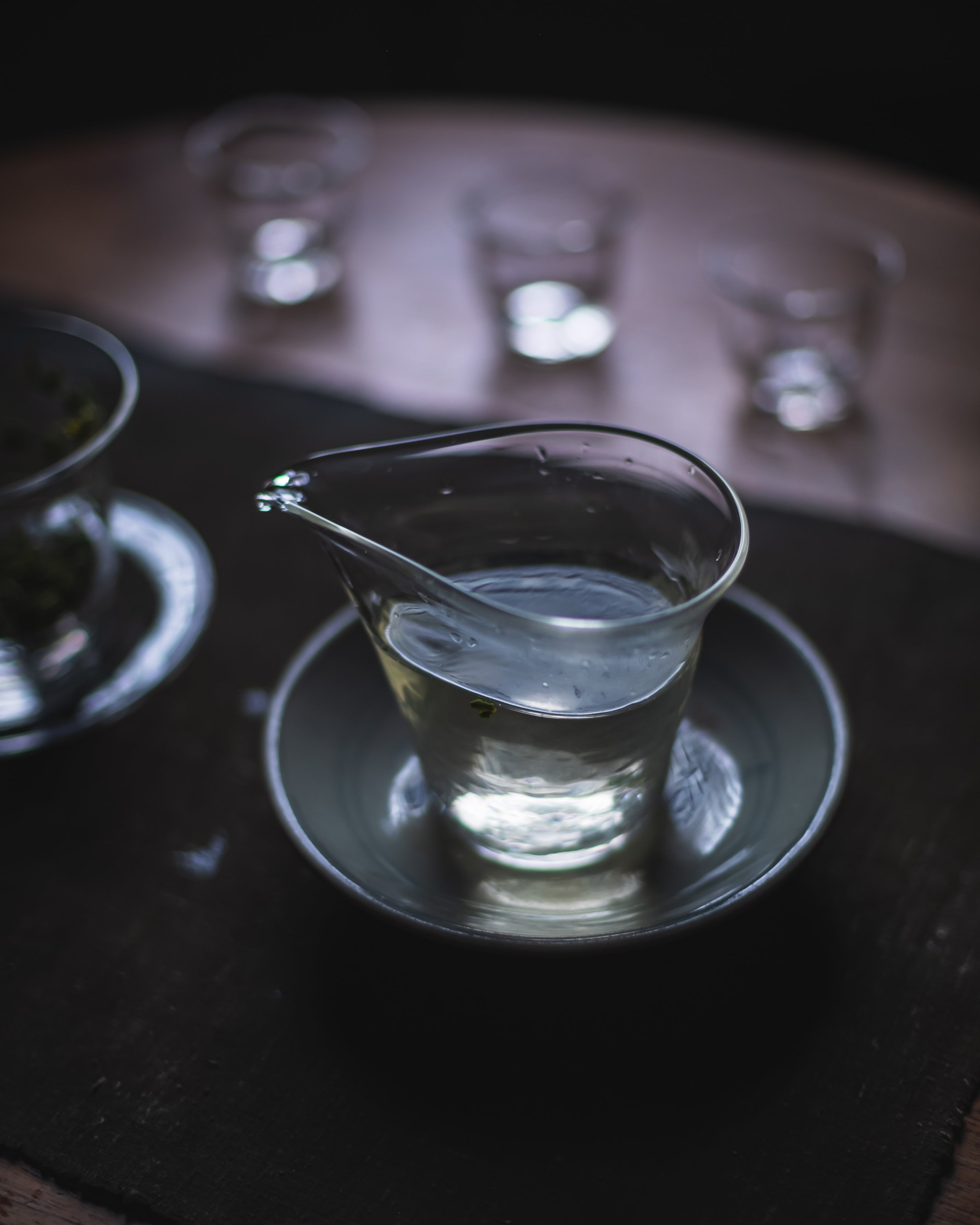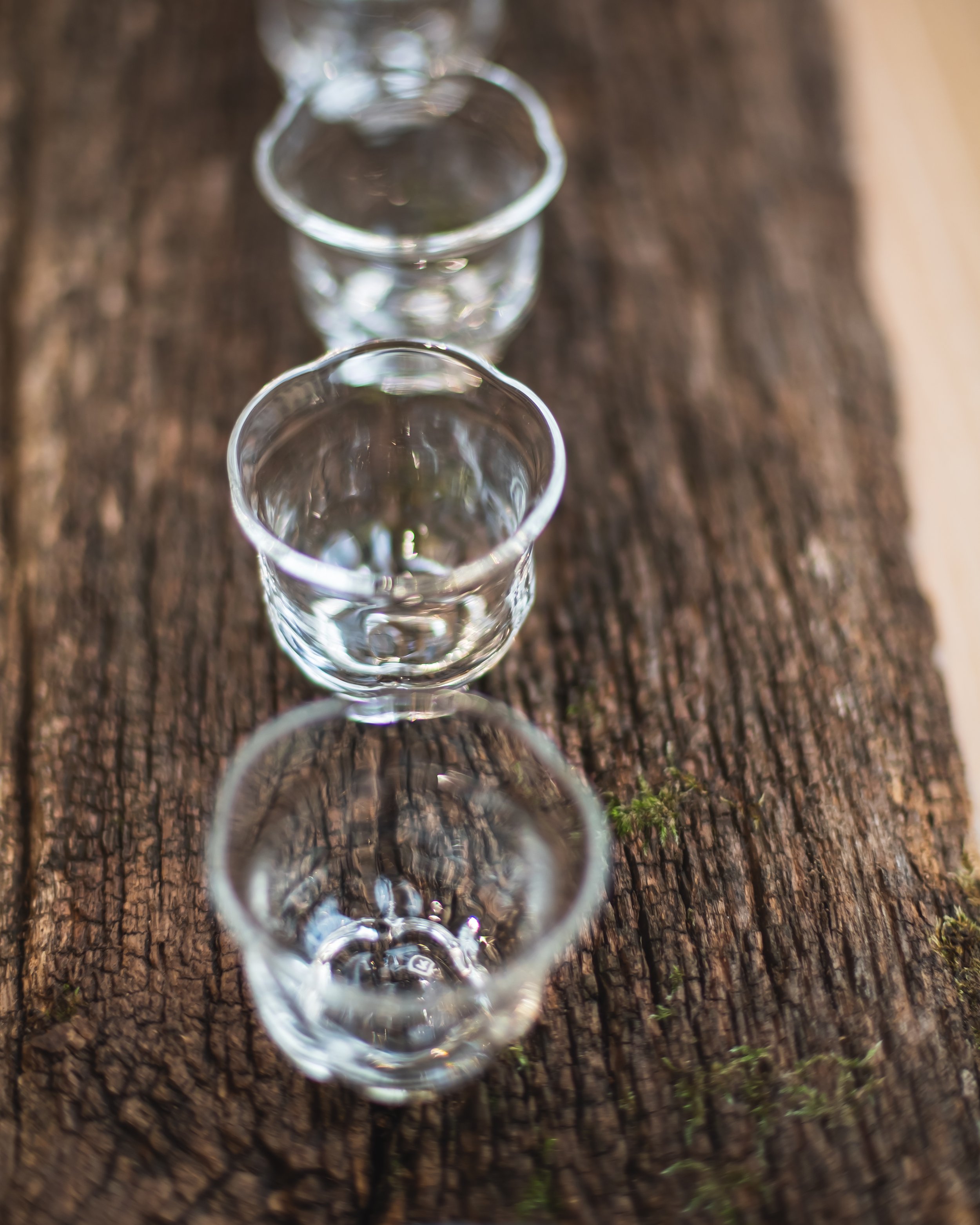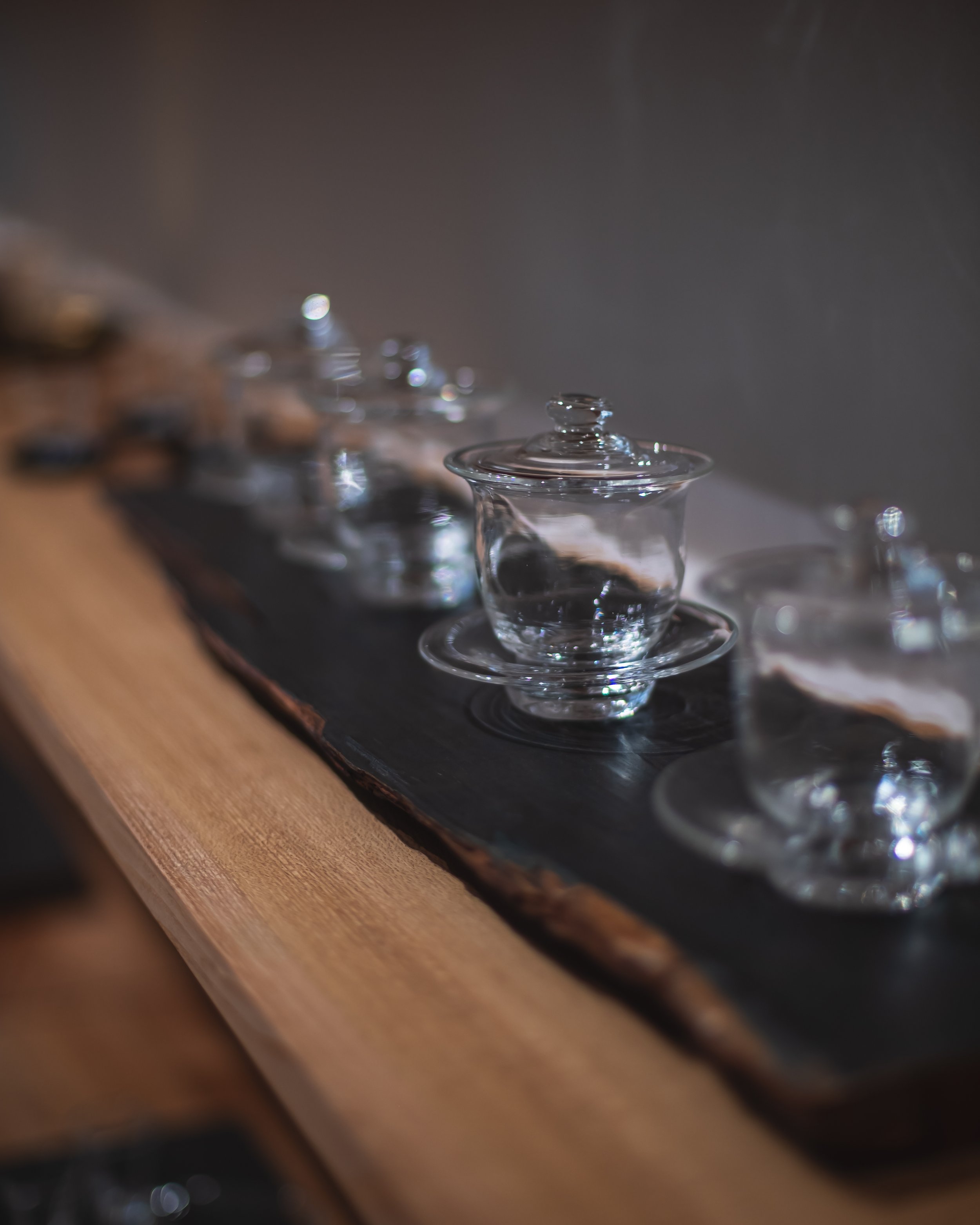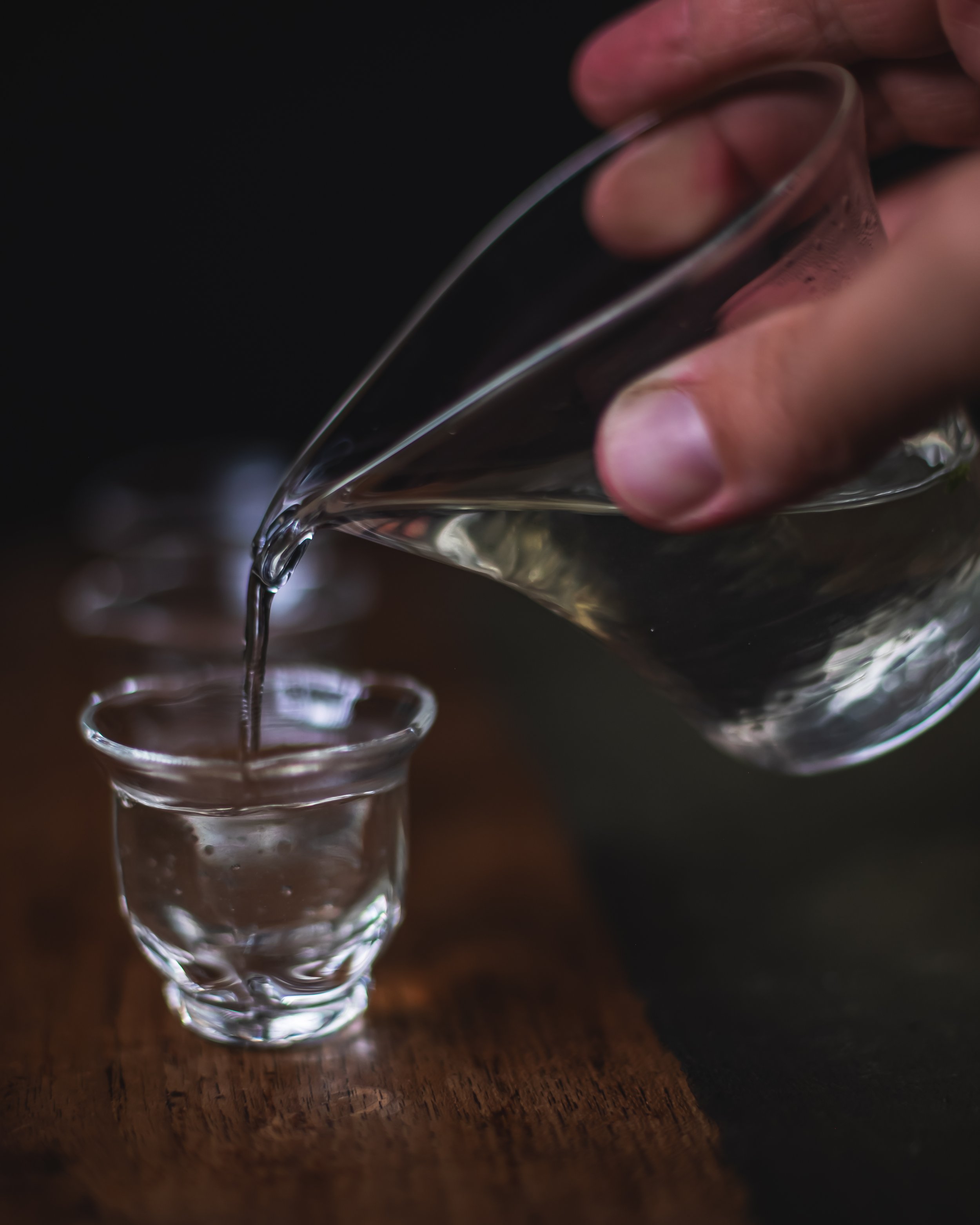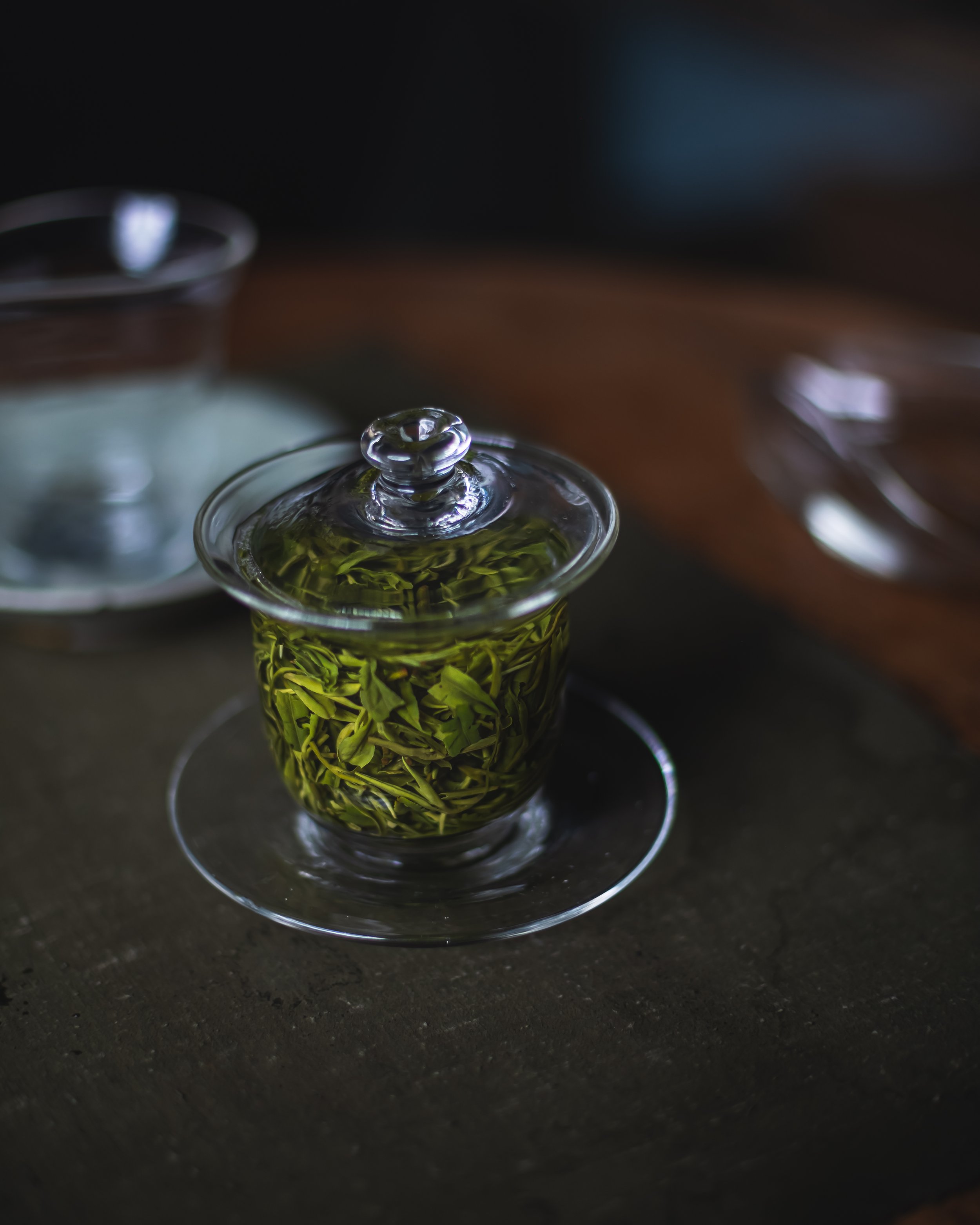We are very happy to feature four unique glass makers from Japan:
Daisaku Hashimura (Yokohama, JP)
Miki Inoue (Toyama/Ishikawa, JP)
Daigo Kikuchi (Toyama, JP)
Torimoto Glass Studio (Kyoto, JP)
Daisaku Hashimura (Yokohama, Japan)
Daisaku Hashimura, short BIO:
1974: born in Tokyo, grew up in Mexico, Peru, Spain, England
1996: Graduated from Kawasaki University (Clinical Psychology)
1997: Apprenticed at Yokohama Glass Studio
learned glassblowing at Notojima Glass Studio.
1998-2002: production assisatandt and operating stuff at several glass studios: Otaru, G.Glas verk (Sweden), Togo Glass Studio (Yokohama)
Since 2006 started freelance glass production
Since 2009 exhibiting works at galleries, department stores and nationwide craft exhbitions
Hashimura-san about how he got into glass making:
“The first time I saw glass being made was in Norway, where my father and mother lived. I never got tired of watching the products and movements of the craftsmen that I saw in the deep forests and lakes that were appearing one after another, and I never thought that it would be the trigger for me to decide on my own vocation much later.”
(From the artist-makers website)
CRACK technique and usage recommendation:
The glass works of this series by Hashimura-san are created using the CRACK or WCRACK technique: the glass pieces are rapidly cooled down in water in order to create controlled cracks and then reheated in the furnace to partially remelt the glas and mend the cracks. Hence all of his pieces are not suitable for hot water or brewing. Please only use luke-warm to cold water with his wares. His pieces make us experiment with new ways of brewing and also preparing matcha. Follow our socials for examples and applications.
Miki Inoue (Toyama/Kanazawa, Japan)
Miki Inoue, short BIO:
1995 : graduated from Sugiyama Jogakuen University
2001: 1-year glass blowing course at Notojima Glass Studio
Grand Prize/Tokyo Governor's Award at 9th Tokyo Dome Tableware Contest
Won prize at 4th Amanohashidate Art Exhibition
2002 : selected for the 20th Asahi Cont. Craft Exhibition
2003: Completed 2nd training at Seto City New Century Crafts Center Glass Studio
Currently produced in Kanazawa and Toyama. Solo and group exhibitions held in various locations
Miki Inoue’s work
The first time I lay eyes on one of Inoue-san’s Katakuchi I was deeply moved by its simple yet elegant shape: soft curves, voluptuous yet reduced and of course highly functional in use. Since then one of her shallow Katakuchi is one of my favourite items on the tea table: I use it for cooling water, for brewing tea or just as a serving pitcher. The polished bottom seems like a clear lense revealing a glimpse on the material below.
by Marcel Karcher, UNEARTHED
Miki Inuoe’s glass - usage recommendation
Despite being not rated for boling hot water, we made the experience that these glass wares are rather heat resistant. When using as a brewing vessel for green tea, or as a serving pitcher - pouring first from another brewing vessel - this glass is easily able to withstand any temperatures below 85 degrees celsius. In my personal opinion using the pitcher with water just off-the-boil while being rather gentle will most probably also always work (even though not recommended). The glass should not be used in the microwave or cleaned in the dishwasher.
Daigo Kikuchi (Toyama, Japan)
Daigo Kikuchi, short BIO:
1997: Born in Gifu Prefecture, Japan
2018: Graduated from Toyama Glass Art Institute, Department of Art
2018: Joined Peter Ivey Kobo Fluid Research Institute
Currently part of Toyama Glass Studio
Daigo Kikuchi’s glass
Despite being rather young Daigo-san created a very unique and distinctive style: The hint of pink in his glass ware - created by adding a bit of coloured glass to his pieces - creates a soft and nostalgic touch. The thin walls make his pieces feel light and refined. The marks of making - similar to throwing lines on ceramics - glow like filaments when reflecting the light. They also make the shadows more playful and the whole piece more organic. The balance of all these aspects makes these pieces very special.
Usage recommendation
Despite being not rated for boiling hot water, we made the experience that these glass wares are rather heat resistant. When using as a brewing vessel for green tea, or as a serving pitcher - pouring first from another brewing vessel - this glass is easily able to withstand any temperatures below 85 degrees celsius. In my personal opinion using the pitcher with water a minute after boiling while being rather gentle will most probably also always work (even though not recommended by the maker). The glass should not be used in the microwave or cleaned in the dishwasher.
Torimoto Glass Studio (Kyoto, Japan)
Yusuke and Yuya Torimoto, short BIO:
Worked at Seikosha Glass Studio, studied under Naoya Arakawa
While presenting their own creations, they learned not only glass making techniques but also many other things.
2015: After leaving the company, they became independent and opened their own studio “とりもと硝子店”
Torimoto glass and usage recommendation
Completely heat resistant - suitable for pouring boiling water inside - the robust glass ware by Torimoto feels much more grounded. Inspired by the life in the mountains of Kyoto, the elongated glass pieces are functional and ideal for daily use. Yuya Torimoto collects many herbs and also fresh tea leaves from the surrounding area and brews them in her glass Gaiwan. Check out their instagram for more impressions.
All Pictures by Mie Oya (katakuchi.jp), some by Marcel Karcher (unearthed-gallery.com)






